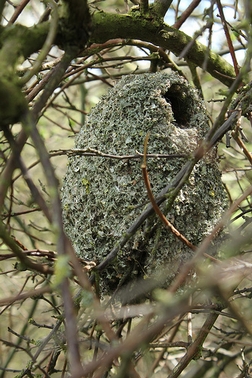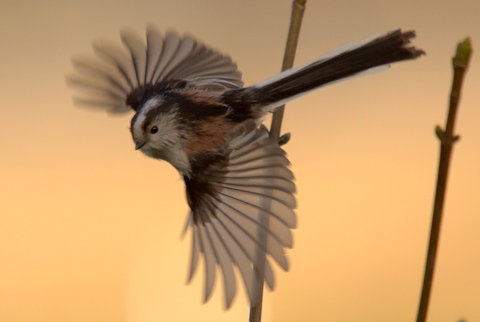Long-tailed Tit


Throughout both December and January there were numerous widespread reports of groups of Long-tailed Tits foraging in gardens. These ranged from Pirnmill in the north to Whiting Bay in the south. The largest group in December was twelve in Whitefarland and in January the largest group was ten in Lamlash. It is typically a bird of deciduous woodland but is also found in orchards, parks and gardens. Wherever they appear they bring delight to those who see them.
Despite being more insectivorous than other tits, Long-tailed Tit has been coming increasingly to garden feeders. The British Trust for Ornithology (BTO) Garden Birdwatch has shown that over the last forty years the number seen in gardens has increased ten fold. Described as flying teaspoons or little balls on sticks these dainty agile birds readily hang on peanut feeders. Peanuts seem to be the best food for attracting the species but it will feed on a range of foods including suet and grated cheese.
Being small makes the species particularly susceptible to cold winters. They can lose about nine percent of their weight overnight. To help reduce this they roost huddled together and on particularly cold nights will pack together into a ball with their tales sticking out.
The winter flocks are thought to be based on the breeding units of the previous season consisting of mated pair, offspring and helpers. Helpers are usually siblings of the male and they help with raising young.
Nest building usually begins in mid-March. The nest of the Long-tailed Tit is a truly incredible construction. Four materials are used - lichen, feathers, spider egg cocoons and moss, with an estimated 6,000 plus pieces in a typical nest that can take forty days to complete. The nest is a flexible sac with a small, round entrance on top, suspended either low in a gorse or bramble bush or high up in the forks of tree branches. The structural stability of the nest is provided by a mesh of moss and spider silk. The tiny leaves of the moss act as hooks and the spider silk of egg cocoons provides the loops; thus forming a natural form of velcro. The tit camouflages the outside of the nest with hundreds of flakes of lichens and insulates the inside of the nest with more than 2000 downy feathers.
The species is monogamous and single brooded. On average around seven eggs are laid. Incubation by the female lasts about thirteen days. The young fledge in about fourteen days and are provisioned by parents and helpers for a further fourteen days. The failure rate of nesting Long-tailed Tit is high. Whereas for the hole nesting Blue Tit less than ten percent of nests fail at the egg stage, for Long-tailed Tit it is more than forty percent. However, research has shown that the presence of helpers doubles the survival rate of the Long-tailed Tit fledged young.